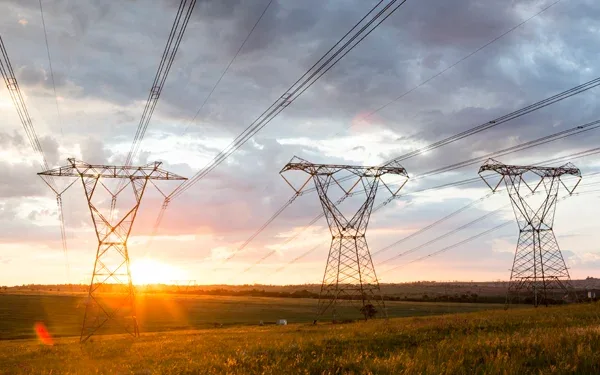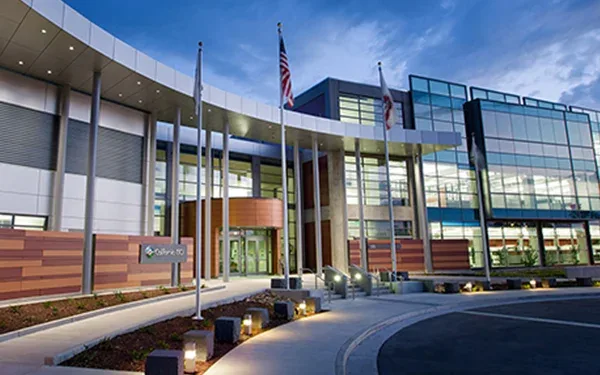A look back and ahead – ISO CEO Report for December 2021

For my end-of-the-year CEO Report to the California ISO Board and the Western Energy Imbalance Market (EIM) Governing Body, I decided this year to reflect back on some of the highlights for 2021 while also providing a bit of a look ahead toward what will undoubtedly be an eventful and productive 2022. I wanted to share this final 2021 CEO report on our Energy Matters blog because I think it offers a pretty good understanding of the most pressing and impactful issues we have been grappling with this past year as we manage the grid, serve our customers and work with our partners to help meet energy policy objectives for California and the West. What follows is that report, as delivered to our boards during our year-end meetings that concluded on December 17. I hope you find it informative.
RELIABLE OPERATIONS AND RESOURCE ADEQUACY
Any retrospective of 2021 needs to start with July 9, when very hot temperatures and the Bootleg Fire in Southern Oregon conspired to create highly stressed grid conditions for the ISO. Fortunately, we were able to work through this challenging set of circumstances without rotating outages thanks to the additional generation capacity that has been added through the year — especially battery storage — as well as generation that has been maintained on the grid through a number of efforts by the ISO and others, such as reliability must-run designations, capacity procurement mechanisms, and extensions of once-through cooling policy compliance requirements.
Other contributing factors included improved communications and coordination with California regulatory agencies and adjacent balancing authorities, access to both traditional and emergency demand response resources and the skill and dedication of our control center operators. The challenges surrounding July 9 also validated the work underway in partnership with state regulatory agencies to restore and maintain a healthy reserve margin, bring additional clean capacity resources onto the system, and leverage new technologies on both the supply and demand side of the equation.
COORDINATED TRANSMISSION PLANNING, QUEUING AND PROCUREMENT
During 2021, the ISO has worked closely with the California Energy Commission (CEC), the California Public Utilities Commission (CPUC) and industry partners to reinvigorate long-term transmission planning and take steps to better synchronize integrated resource planning, transmission queuing and resource procurement processes. Such coordination is essential to enable the state to meet Senate Bill 100 goals in a reliable and affordable fashion. In early 2022, the ISO will release the first findings of our new 20-year transmission outlook process. This planning process is using SB 100 resource portfolios and other inputs to characterize the longer-term architecture of the ISO high-voltage transmission system. It will evaluate on-shore, off-shore and inter-regional transmission solutions. The 20-year outlook is designed to provide an overarching transmission planning roadmap to guide interconnection queuing, resource planning, network upgrades, and resource procurement in the years ahead. The improved coordination with the CEC and CPUC in 2021 concerning resource planning and procurement has been very valuable. There is much fine-tuning and stakeholder feedback ahead, but I look forward to building on this enhanced coordination in 2022 and beyond as we make additional reforms to ensure all of these processes fit into a rational and comprehensive framework. At the same time, the ISO has been conducting a stakeholder process to explore foundational reforms to transmission queuing procedures given that we now have over 250 GW of requests for service in our transmission queue, which is an unsustainable situation for all concerned. Following another tight summer in 2021, we also posted clear and transparent information about currently available transmission capacity to inform and guide resource procurement in the next few years as we face additional resource retirements and load growth. The ISO will maintain a laser focus on transmission planning reform in 2022.
ENERGY STORAGE
2021 was a pivotal year for battery storage in California. We are set to finish the year with about 2,500 MW of battery storage installed on the ISO grid, up from about 250 MW in summer 2020. This is the highest concentration of lithium-ion battery storage in the world and testament to years of policy support and procurement efforts by state energy officials. And although there were some operational and supply chain challenges along the way, in general, this new resource performed very well, especially during net peak operating periods. Following the implementation of ESDER-4 (that stands for Energy Storage and Distributed Energy Resources) in November and a very informative October 28 Energy Storage Forum, the ISO has just released a straw proposal for our new energy storage enhancements initiative. Through this and other efforts, we intend to continue identifying and taking all necessary steps to enable energy storage technologies to play an increasingly crucial role on the California grid and to evolve our market rules to support new storage technologies in the future. This past year also provided another historic moment on a Saturday afternoon in late April when 94.5% of the energy on the grid came from renewables. It was a new record for California and the moment was fleeting, but it did provide a glimpse into our clean-energy future as the state continues to advance toward a carbon-free electrical grid.
IMPROVED COMMUNICATION AND COLLABORATION
Improved communication and collaboration with our key partners in California and across the West was another major focus of attention in 2021. As the ISO’s new CEO, I was pleased to get to know and redouble collaboration with my colleagues at the CPUC, CEC, the California Air Resources Board, the Governor’s office and the Legislature. I also had a chance to strengthen working relationships with leaders at utilities across the West, with the Body of State Regulators, Committee on Regional Electric Power Cooperation and Western Interstate Energy Board, representatives of the Independent Power Producers, (IPP) and power marketing sectors, and environmental and public interest advocates from throughout the region. These relationships are very meaningful to us at the ISO and we look forward to continue building on them in 2022 because it really does require an all-hands-on-deck approach to maintain reliability as California continues to move toward achieving its energy policy objectives. In just one of our many coordination initiatives over the past year, the ISO, facing worsening drought conditions and temperature volatility in advance of Summer 2021, hosted a Summer Readiness Roundtable in April with key operational partners throughout the region.
At this event, we reviewed lessons learned and response actions resulting from Summer 2020. We also examined supply and demand fundamentals for Summer 2021, and ensured maximum coordination and readiness in advance of what was clearly going to be another challenging summer season. To better prepare for that challenge, the ISO’s Communications group helped strengthen messaging and outreach around Flex Alerts, added enhanced visibility tools to our website, and developed a new Energy Matters Blog that highlights key issues and market developments impacting the ISO and our partners. In 2022, we will be rolling out a redesigned and more customer-friendly ISO website as well as a new 5-year strategic plan.
This year, we also created the position of Vice President of Stakeholder Engagement and Customer Experience to further enhance our stakeholder processes and make sure the ISO provides world-class service to our growing customer base in 2022 and beyond.
RESOURCE SUFFICIENCY AND WHEEL-THROUGHS
As we all know, this past year raised difficult issues with respect to resource sufficiency and the prioritization of service to loads, exports and wheel-throughs. Through extensive outreach and coordination with EIM entities and partner utilities across the West, we are refining changes to the resource sufficiency evaluation and working to establish short-term stability and longer-term durability for the rules governing wheel-throughs. Both these issues are vitally important to our partners throughout the West and key to the trust that is the foundation of regional markets. We have agreed to take some additional time to work through the resource sufficiency evaluation and will be bringing those issues back to the EIM Governing Body and Board of Governors in February 2022. We are also exploring the best way to provide long-term certainty around the rules associated with wheel-throughs for market participants across the region.
EIM AND EDAM
Throughout these challenging conversations, I have appreciated the willingness of our many partners to look for opportunities to build on the foundation of the Western EIM through exploration of a joint authority governance structure and an extended day-ahead market (EDAM). After more than 18 months of intensive work through the EIM Governance Review Committee, both the EIM Governing Body and ISO Board of Governors unanimously approved the joint authority framework for EIM governance on August 20. This was a crucial milestone in building greater collaboration, inclusiveness and confidence in EIM governance.
Establishing this new framework also demonstrates the capacity and willingness of California parties to take meaningful steps forward on governance reform. It is a pleasure to be participating in the first formal joint meeting between the EIM Governing Body and ISO Board of Governors this month. At the same time, I was impressed with the work of a sub-group of EIM entities and the California IOUs that developed a consensus last summer around a set of core design principles for EDAM. Building on that collaborative effort, the ISO’s October 13 EDAM Forum attracted more than 600 participants from across the region, helping to bring a renewed spirit of interest and momentum to the EDAM initiative. A follow-up stakeholder meeting on November 12 included market participants and other key interests from across the West to further discuss the timing and approach to EDAM market design and governance. Three working groups will begin their focused efforts right after the New Year, with the goal of completing the detailed market design by the end of 2022, conducting implementation testing in 2023 and culminating with the onboarding of a first class of EDAM participants in early 2024. Amidst a dynamic and competitive environment for market services, we are fully committed to positioning EDAM as the next major step in West-wide market integration.
As all this was occurring, the Western EIM had another strong year. Cumulative benefits since its launch in 2014 now exceed $1.7 billion and 2021 saw the largest annual growth in new participants for the real-time energy market. In March, the EIM added the Turlock Irrigation District and the Balancing Area of Northern California (BANC) Phase 2, which is comprised of the Modesto Irrigation District, the City of Redding, the City of Roseville and the Western Area Power Administration – Sierra Nevada Region. On April 1, the Los Angeles Department of Water and Power and Public Service Company of New Mexico joined; NorthWestern Energy was added on June 16. Continuing with this momentum, in September the Western Area Power Administration Desert Southwest signed an implementation agreement to participate in the EIM in 2023. That same month, the Bonneville Power Administration announced that it will be joining the Western EIM in 2022. With all the new participants, the EIM is now on track to have 22 entities representing 84% of the demand for electricity in the WECC by 2023. The Western EIM’s continued growth and success provide a strong foundation as we continue moving forward with EDAM.
REPRESENTING THE ISO AT COP 26
For several years, the ISO has stayed engaged with a variety of international organizations focused on sharing best practices and promoting technology innovation in grid operations. Last month, I had the honor of representing the ISO at the international climate change conference (COP 26) in Glasgow, Scotland. I was invited to talk about the important technological research the ISO is helping to advance as one of six international system operators and founding members of the Global Power System Transformation Consortium (G-PST). Through the G-PST effort, we are collaborating with our peers, research and technical institutions, government agencies and stakeholders to ensure that electrical grids have the technological advances needed to efficiently run carbon-free systems. It was great to bring that important issue to such a large global audience and we are well positioned to continue playing a pivotal role in those efforts.
IMPROVED PRIORITIZATION AT THE ISO
I am happy to report that our new Enterprise Board and Enterprise Program Management Office are off to a good start and that these are important new tools we have adopted to better set priorities at the ISO and be more strategic and efficient in how we reach decisions and sequence projects. The new process helps us take a more focused look at our different initiatives and establish our highest priorities, take lower priority work off the list, and conduct the necessary cross-organizational coordination to conduct our high priority work as efficiently and expertly as possible. In a busy organization like this, we need to be as strategic as possible in deciding what we take on and I am confident this new process will be highly beneficial to ISO employees and customers.
INVESTING IN OUR PEOPLE AND CULTURE
This year, the ISO also rolled out a new set of corporate values – integrity, accountability, humility, service and resilience. We also established a new set of leadership behaviors designed to foster management excellence and employee engagement. Like others, we have faced heightened employee retirements and other turnover in the wake of the pandemic, but we are also investing in our workforce through the creation of 26 additional FTE’s in areas such as transmission planning, technology, customer service, enterprise program management and compliance. Amidst the many changes in workplace culture, we refreshed our HR strategy and will strengthen our efforts in recruitment, retention and nurturing a positive, inclusive and highly engaging work environment.
ENDURING THE PANDEMIC
Of course, almost all of these events and outcomes occurred under the extraordinary conditions of the coronavirus pandemic. All of us in the utility industry have had to demonstrate tremendous innovation, persistence and resilience in maintaining reliability and meeting the needs of our constituents during this unprecedented time. Every single person at the ISO has contributed to our progress in 2021. I am deeply appreciative of their personal commitment to the ISO’s crucial mission. We were very excited over plans to return to our facilities in Folsom and Lincoln on a hybrid 3-day in/2-day remote schedule. Personally, I have really been looking forward to the day-to-day interaction with my colleagues. Alas, on Wednesday, December 1, after much consideration and deliberation with our officer team, I notified the entire ISO workforce that we were pushing back our return to building timeline from January 18 to March 14, 2022. Our decision was not made lightly. But supply chain disruptions that have been impacting our ability to make sure employees would be returning to a workplace conducive to maximum safety and productivity, as well as general uncertainty about pandemic-related considerations, made our decision the correct one for this moment. As I said in my email to our workforce, we are moving the return date back to March because we also want to provide folks as much advance notice as possible so they can plan appropriately.
TURNING THE PAGE ON 2021
For everything we accomplished together over the past year, the support of the ISO Board of Governors and EIM Governing Body has been crucial and greatly appreciated. I look forward to working with all of you toward another productive and successful year in 2022.

